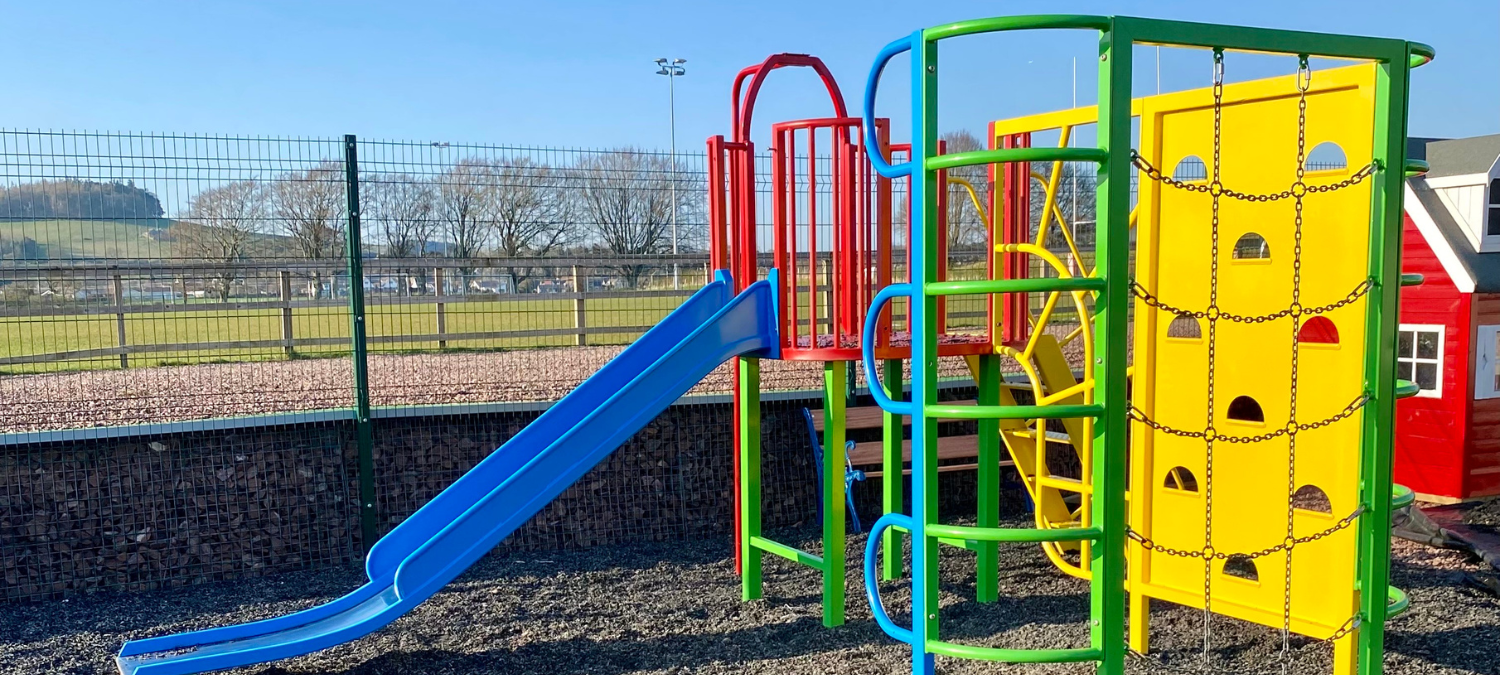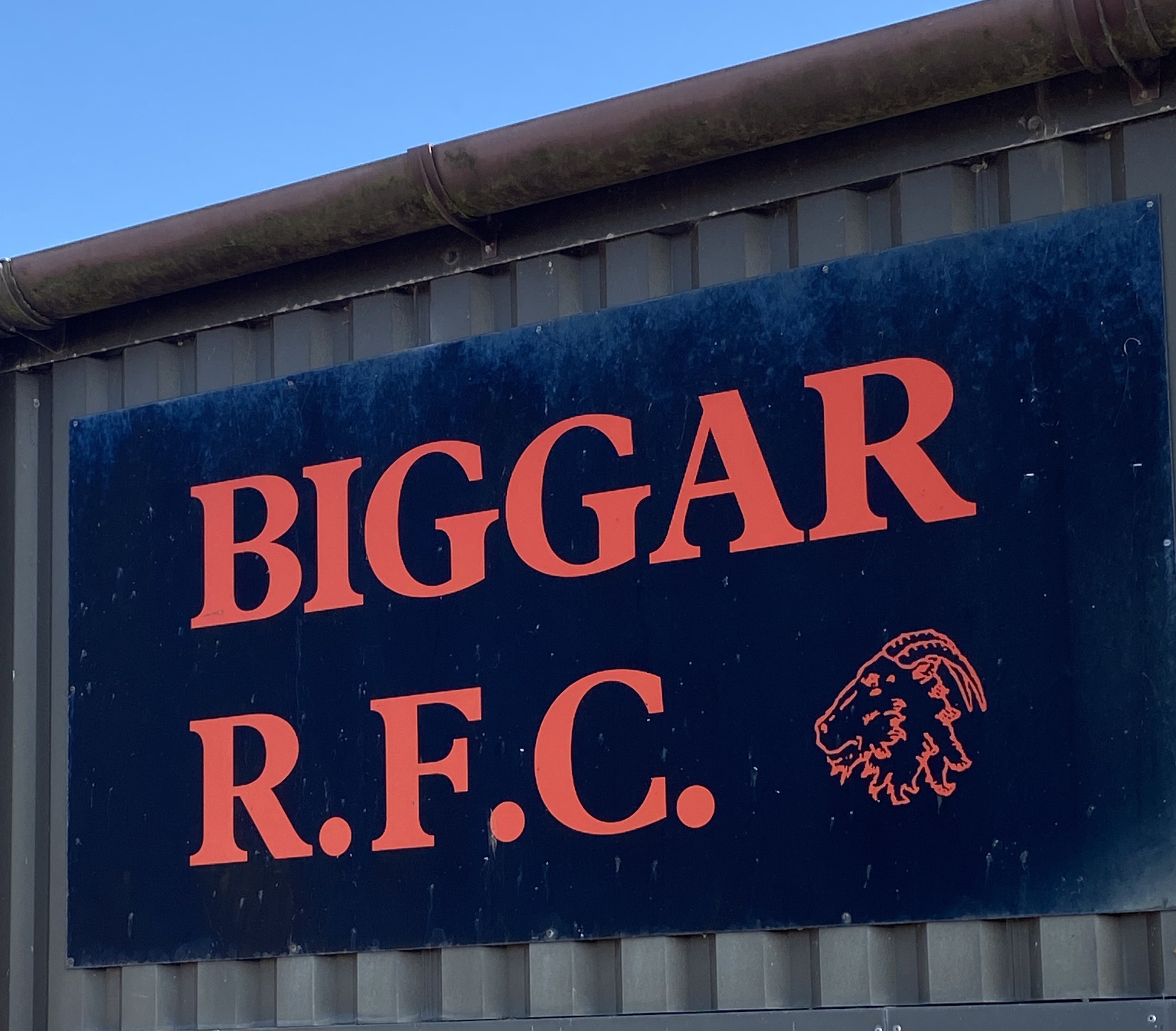
Biggar Rugby Football Club: community engagement in grassroots development
Biggar Rugby Football Club has supported the local children's play park expansion with funding from the Nadara Glenkerie Community Fund.
About Biggar Rugby Football Club
Biggar Rugby Football Club (BRFC) was established in 1975 and registered as a charity in September 2017, with a mission to advance public participation in Rugby Union Football and promote recreational facilities for the community. Located at Hartree Mill Sports Grounds, the club has over 400 active members, with approximately 300 under 18 years of age and around 150 preschool and primary school-aged children, making BRFC a family-oriented organisation.
The project: expansion of the children’s playpark
 The expansion of the children's play park arose from both necessity and opportunity. As part of BRFC's ambitious infrastructure development programme, the club was constructing a clubhouse extension that would consume the area where the existing play park was located. Rather than simply relocating the facility, the club recognised this as an opportunity to upgrade and expand the play provision.
The expansion of the children's play park arose from both necessity and opportunity. As part of BRFC's ambitious infrastructure development programme, the club was constructing a clubhouse extension that would consume the area where the existing play park was located. Rather than simply relocating the facility, the club recognised this as an opportunity to upgrade and expand the play provision.
The original play park, built circa 1998, consisted of only four swings and a climbing frame, accommodating approximately eight children. However, with approximately 150 junior members aged 12 and under, the facility was frequently unable to satisfy the youngsters demand for play, particularly during training days and weekend fixtures when families gathered at the ground.
The existing equipment was primarily aimed at older children aged 7-12 years, leaving younger children with limited appropriate play options.
Challenges
BRFC encountered several significant challenges in delivering this project:
Financial Constraints: Operating with a relatively modest budget, the club needed to find innovative ways to deliver maximum value without compromising on quality or safety standards.
Maintaining Memorial Significance: The original play park was funded by the Barr family in commemoration of their daughter Julie, who sadly died in 1998 aged just four. The existing facility bore a commemorative plaque, and any expansion needed to respect and preserve this important memorial aspect.
Age-Appropriate Equipment: The challenge of providing suitable equipment for a broad age range from toddlers to 12-year-olds, whilst ensuring appropriate segregation for safety reasons.
Community Support and Volunteering
This project demonstrates the importance of community-driven development, volunteer involvement and stakeholder engagement and the following steps were taken:
Consultation Process: BRFC facilitated consultation with various stakeholders throughout the design process. Early concept designs were shared with participants from the mother and baby exercise classes that utilised the clubhouse facilities. The club committee, many of whom were parents and grandparents of children who used the existing park, also provided valuable feedback that refined the final design.
Volunteer Expertise: The club leveraged its network of volunteer builders, joiners, and designers who took responsibility for fabricating, pre-assembling, and installing equipment. This volunteer workforce was organised by an experienced Project and Design Manager who was also a club volunteer.
Equipment Restoration: A local contractor volunteered to sandblast and repaint existing equipment at no cost to BRFC, enabling the reuse of all original play equipment in the expanded facility.
Family Approval: Crucially, the Barr family was consulted once the final concept design was established, and their approval was sought before design finalisation, ensuring the memorial aspect remained respected and appropriate.
Funding
In 2024, the club approached the Nadara Glenkerie Community Wind Farm Fund to request just under £10,000 to contribute towards the total project cost of just over £14,500. The Fund Panel considered the proposal and at first were unsure whether the requested amount and project costs would be enough to cover the project.
Following careful consideration of the application and taking into account the volunteer time and expertise that would support the project, the Fund Panel agreed to award the full requested amount. With £5,000 of match funding from the club itself, the project was able to proceed.
Outcome
The project was completed in late spring/early summer of 2025 and has delivered its original objectives and more:
Expanded Capacity: The play park footprint increased by 82%, enabling safe use by 25-30 children simultaneously compared to the previous capacity of eight children.
Age-Inclusive Equipment: The new facility provides appropriate equipment for children from toddlers to 12 years, with thoughtful segregation between equipment for ages 3-5 and 5+ for safety reasons. Inclusive equipment was incorporated for children with varying physical abilities.
Enhanced Safety Features: Additional seating was provided through innovative retaining structure design, and colour-neutral ground covering material was specified that doesn't transfer to skin or clothes.
Environmental Benefits: All existing equipment was restored and reused, reducing embedded carbon and landfill waste. New equipment utilised sustainable materials including recycled tyre ground covering and wood products from renewable sources.
Extended Community Access: The facility remains available to the public 24/7, serving both club members and the wider community. It's estimated that up to 200 young people could benefit over a weekend, with additional users during weekdays.

The Importance of Volunteer and Community Engagement
The BRFC play park project is a valuable example of why volunteer and community engagement are fundamental to successful grassroots development projects. By utilising volunteers' experience and expertise, BRFC reduced labour costs while maintaining professional standards, enabling more budget allocation towards quality materials and equipment.
When local people contribute their time and skills to a project, they develop genuine ownership and pride in the outcome, ensuring better long-term maintenance and responsible use. The in-depth consultation ensured the final design reflected community needs rather than assumptions.
Final Thoughts
This project demonstrates that with careful planning, meaningful community engagement, and strategic use of local expertise, even modest budgets can deliver transformational community infrastructure that will serve families for generations to come.
Read more about the Nadara Glenkerie Wind Farm Community Fund here.




